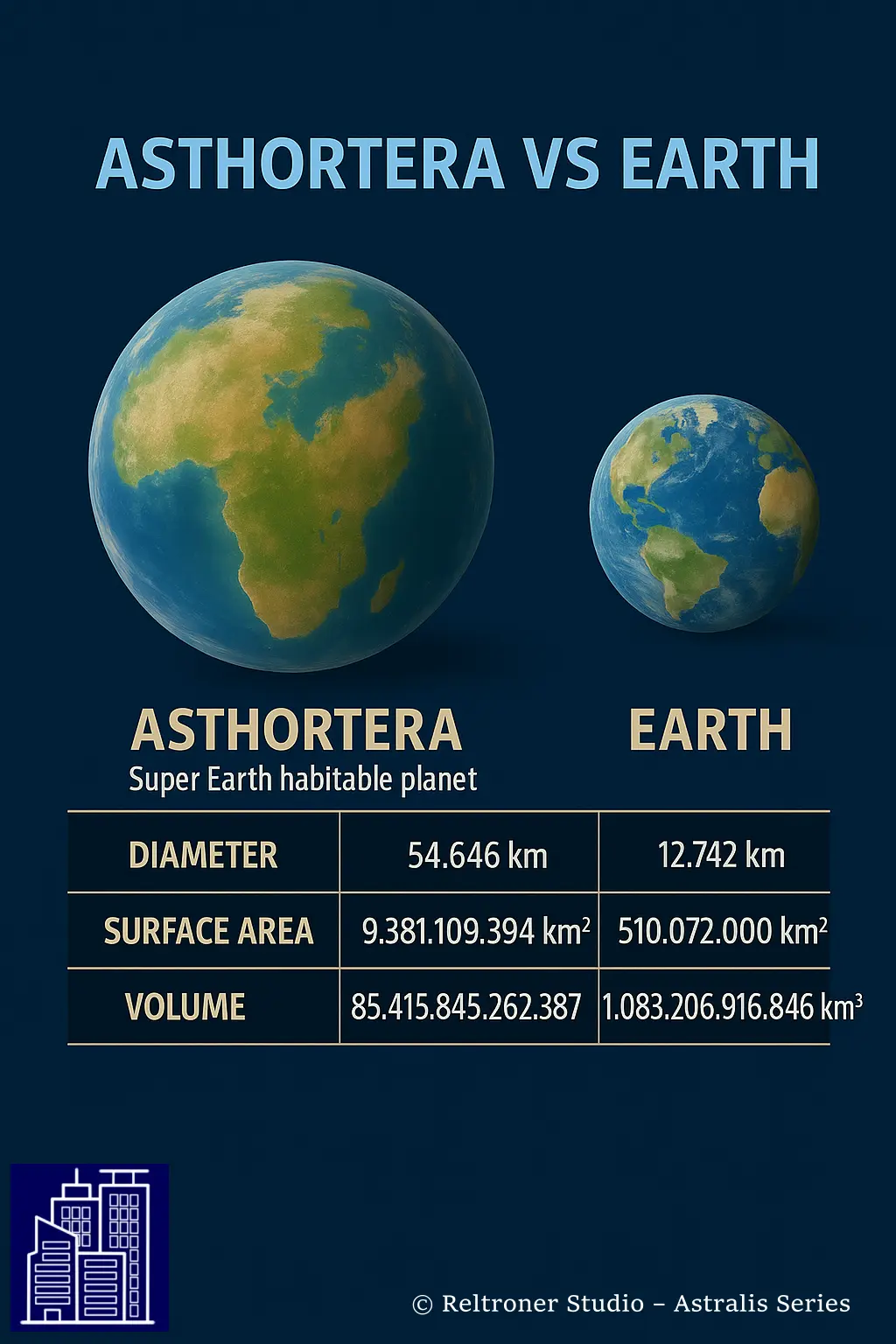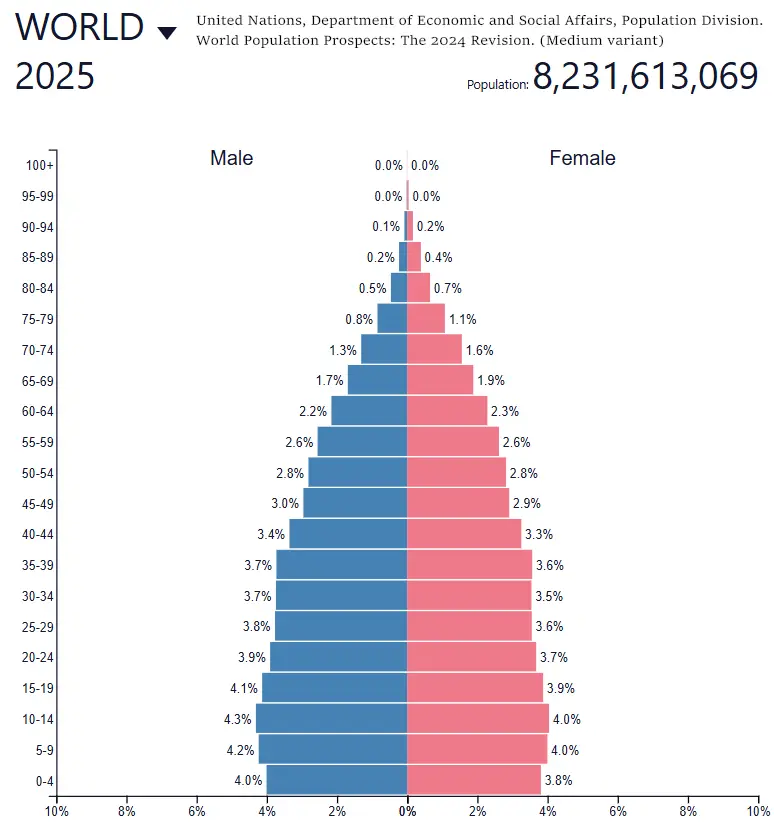🌍 Asthortera vs Earth: Planetary Comparison
- 2025-04-27 • Published

A detailed and immersive comparison between Earth and the fictional Super Earth, Asthortera — exploring differences in planetary size, population, life expectancy, gravity adaptation, and civilization advancement. Discover how Asthortera envisions a future of resilience, innovation, and spiritual growth across a grander world.
Asthortera vs Earth: Planetary Comparison
🌍 Overview
This document provides a detailed comparison between the fictional Super Earth planet Asthortera and Earth, highlighting their fundamental physical characteristics including diameter, surface area, and volume.
📈 Planetary Data Table
🔵 Diameter
- Asthortera: 54,646 km
- Earth: 12,742 km
🌍 Surface Area
- Asthortera: 9,381,109,394 km²
- Earth: 510,072,000 km²
🌌 Volume
- Asthortera: 85,415,845,262,387 km³
- Earth: 1,083,206,916,846 km³
🌊 Water Surface Dominance
-
Asthortera: ~52% Water / ~48% Land
-
Earth: ~71% Water / ~29% Land (almost entirely ocean-based)
🌍 Visual Representation
Asthortera appears as a massive, vibrant world with more diversified biomes, greater land-to-water ratio compared to Earth, and broader atmospheric layers.
- Color Palette: Rich greens, deep blues, golden deserts.
- Topography: Tall mountain ranges, mega-rivers, dense forest belts.
📈 Population and Development Profile
📊 Asthortera Development Profile
- Total Sentient Population: ~4412 billion
- SDI (Sentient Development Index): 0.921 / 1.000 (Among the highest across all inhabited planets)
- Median Age: ~40 years
- Birth Rate: Stable, with gradual urban demographic trends and high education standards
- Education Systems: Heavily research-based, with universal access and ethical enforcement
- Age Pyramid Shape: Balanced column — wide in middle age, tapering gradually at top and base
- Dominant Age Groups: 35–49 (peak), stable 20–34 and 50–64 segments
- Youth Population (0–14): ~16.7% of total
- Elderly Population (65+): ~20.4% of total
- Urbanization Rate: ~89.5%
- Population Composition:
- 61% Human (Depeisit descendant)
- 24% Human (Cistheta descendant)
- 7% Human-Wizard-Witch (native Asthorteran race)
- 5% Cosmeilia-Human Mixed & Others Cosmeilian Sentients
- 3% Others (alien humanoids, hybrids)
- Life Expectancy: ~105 years
- Summary: A mature, stable society with high life expectancy and ongoing intellectual productivity, driven by merit, innovation, and spiritual balance.
🔍 Asthortera Population Pyramid: 
📊 Earth Development Profile
- Total Human Population: ~8.2 billion
- HDI (Human Development Index): ~0.739 (Global Average)
- Median Age: ~30.9 years
- Birth Rate: Declining in many countries, with varying education standards
- Education Systems: Uneven globally, with disparities based on region and economy
- Age Pyramid Shape: Generally broad at base in developing countries, narrower in developed regions
- Dominant Age Groups: Highly varied by region
- Youth Population (0–14): ~24.3% globally
- Elderly Population (65+): ~10.5% globally
- Urbanization Rate: ~56%
- Population Composition:
- ~60% Asian
- ~16% African
- ~10% European
- ~8% Latin American and Caribbean
- ~5% North American
- ~1% Oceania and others
- Life Expectancy: ~73 years (Global Average)
- Summary: A diverse and evolving society with significant disparities in economic and educational opportunities.
🔍 Earth Population Pyramid: 
🔢 Key Differences
✨ Size and Scale
- Asthortera has a diameter over 4.29 times larger than Earth.
- The surface area of Asthortera is about 18.39 times larger than Earth's.
- The volume of Asthortera dwarfs Earth's, being roughly 78.87 times greater.
✨ Habitability
- Asthortera is conceptualized as a Super Earth — a planet larger than Earth but still within the range of potentially habitable environments.
- The planet features a varied landscape with extensive oceans, massive continents, and climates capable of sustaining complex ecosystems.
✨ Orbital Characteristics (hypothetical)
- Assumed to orbit a sun-like star within the habitable zone.
- Gravity is stronger compared to Earth due to its greater mass and size, potentially affecting flora, fauna, and human physiology.
🌟 Gravity and Biological Adaptation
- Earth: 9.8 m/s²
- Asthortera: 12.5 m/s²
🧍♂️ Avg. Male Height
- Earth: ~171 cm
- Asthortera: 174.8 cm
🧍♀️ Avg. Female Height
- Earth: ~158 cm
- Asthortera: 162.4 cm
Although Asthortera has stronger gravity compared to Earth, its human and sentient populations maintain relatively tall average heights (174.8 cm for males and 162.4 cm for females). This anomaly is explained by several key factors:
- Genetic Evolution Adaptation: Over thousands of years, Asthorteran humans have evolved stronger bones, denser muscles, and cardiovascular systems adapted to higher gravitational forces.
- Advanced Medical and Nutritional Science: Access to superior nutrition, mineral intake, and rigorous health systems ensures optimal skeletal and muscular development.
- Selective Breeding / Natural Selection: Natural evolutionary pressures favored individuals with ideal body structures: compact yet sufficiently tall to maximize biomechanical efficiency.
- Microgravity-Resistance Biostructures: Unique biological structures, such as reinforced protein fibers, enable Asthorterans to resist gravitational compression while maintaining vertical growth.
Thus, despite stronger gravitational pull, Asthorteran civilizations have biologically, medically, and socially adapted to sustain tall, healthy sentient beings.
🌍 Visual Representation
Asthortera appears as a massive, vibrant world with more diversified biomes, greater land-to-water ratio compared to Earth, and broader atmospheric layers.
- Color Palette: Rich greens, deep blues, golden deserts.
- Topography: Tall mountain ranges, mega-rivers, dense forest belts.
📊 Summary
Asthortera is a monumental world compared to Earth, embodying the dream of an expanded human experience beyond our solar system. It provides a conceptual blueprint for how a larger, habitable world might sustain life, exploration, and civilization at a much grander scale.
"Let Astralis light the unknown."
— Reltroner Studio — The Abyss of Comfort
© Reltroner Studio 2025 — Asthortera Lore